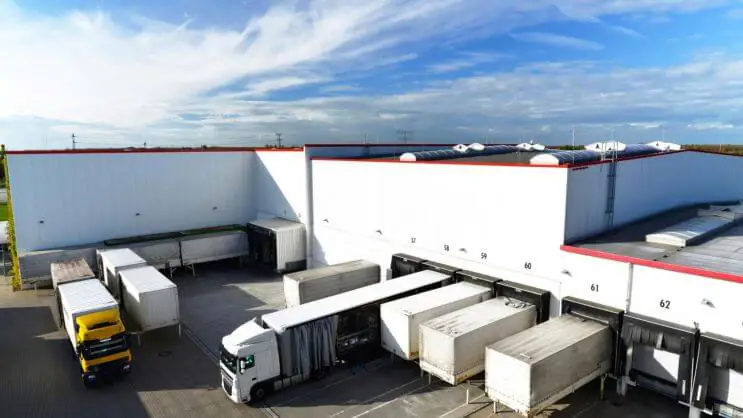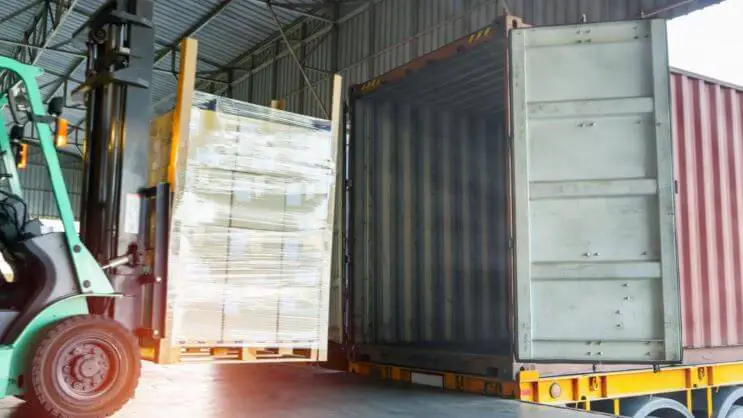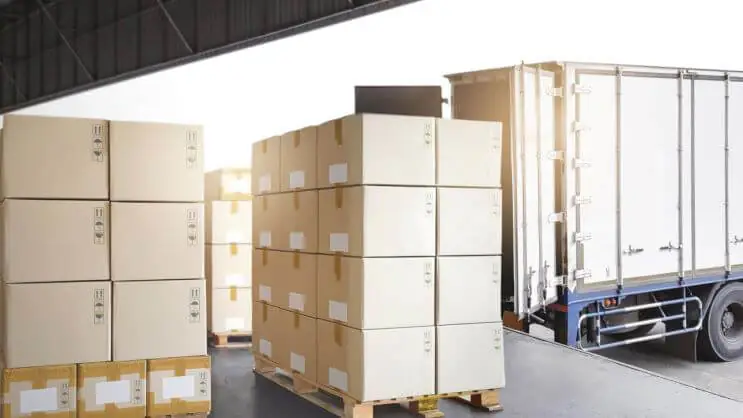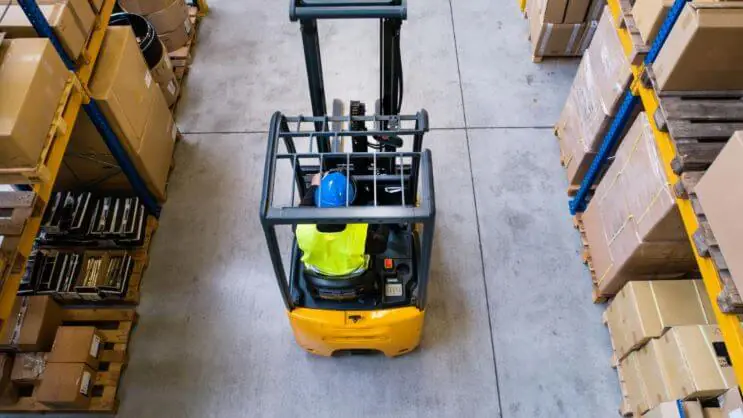Importance of systems integration for the logistics industry

System integration in the logistics industry is about logistics management. Logistics companies today recognize the substantial savings available to them through improvements based on connecting various digital systems that assist in their logistics operations. Effective system integration is how companies gain a strategy for a competitive advantage.
This article focuses on increasing organizational performance and supply chain efficiency in the logistics environment. We will explain the logistics integration philosophy involving internal and external integration for a coordinated process. You’ll learn about key technical objectives for integrating legacy systems with newly adapted solutions into your organization. Our findings depict the need for a holistic approach to Enterprise Resource Planning (ERP) system integration, document management, tracking systems, fleet management, truck loading systems that effectively support shipping operations while shipping special cargo, and legacy system integration.
What is logistics management?
Logistics management is the process of planning, implementing, and controlling the flow and storage of goods, services, and related information from the point of origin to the point of consumption. All of this means delivery to the final customer.
Logistics management involves coordinating various activities, such as system integration. Most of them are concentrated on the operations that take place under the roof of warehouse facilities. Still, in today’s interconnected world of supply chains, they extend far beyond.
Logistics management aims to optimize the flow of goods and information to ensure the efficient flow of goods in the logistics chain. It is where you can minimize costs and promptly meet customer needs. In general, when we think about proper logistics management, it cannot go along without tight systems integration. Tight system integration forms this discipline and outlines its key role in ensuring a well-functioning business and satisfied customers. We elaborate more on system integration methods in the next paragraph.
What is system integration?
System integration is the process of connecting different subsystems or components within a company’s information technology (IT) infrastructure so that they can function as a cohesive unit. This includes combining hardware, software, and network components to ensure seamless communication and data exchange between different systems.
Here are the elements of logistics management that requires system integration:
Procurement
Procurement involves obtaining and contracting for the necessary materials, goods, or services required for business operations. This includes selecting suppliers, negotiating contracts, freight charges, and prices for other services.

Enterprise application integration with truck and container loading systems can deliver long-term benefits to the business
Inventory management
Inventory management refers to controlling and supervising goods carried by a company to ensure sufficient inventory levels to meet customer demand. Today, logistics involves optimizing many processes while minimizing excess inventory and associated costs. Thus, inventory management includes tracking, forecasting, replenishment, and optimization.
Intralogistics management
Intralogistics management focuses on optimizing internal logistics processes in a facility or warehouse. It includes the efficient movement, storage, and handling of goods in the facility. To streamline operations, technologies such as conveyor systems, automated guided vehicles (AGVs), and warehouse management systems (WMS) facilitate system integration. However, these are not the only systems. We’ll tell you more in the next paragraph.
Warehousing
Warehousing involves storing and managing goods in a facility or warehouse. It includes receiving, storing, picking, packing, and shipping goods. It also includes maintaining proper inventory records and ensuring the safety of stored items with its system integration. However, it can combine all of these processes to maintain and run a warehouse infrastructure.
Distribution
Distribution refers to transporting goods from a warehouse or manufacturing facility to the final customer or distribution center. It includes route planning, order consolidation, transportation planning, and management of various modes of transportation such as trucks, rail, air, or sea.
Packaging
Packaging is the process of designing and creating containers or materials to eliminate the risk of damage as well as store and transport goods safely and efficiently. This includes the selection of appropriate packaging materials, design of packaging configurations, labeling, and compliance with regulatory requirements.

Efficient loading system integration can improve warehouse operations
Loading
Loading involves moving goods onto vehicles, such as trucks, containers, ships, or aircraft, in preparation for transport within its system integration. It requires careful handling of goods to ensure they are properly secured and balanced to prevent damage during transport.
Transportation
Transportation involves moving goods from one location to another. It involves choosing the most appropriate mode of transportation (e.g., road, rail, air, or sea). It involves organizing transportation routes, managing carriers, and tracking shipments in transit to ensure timely delivery. These areas are required for system integrations.
Delivery
Delivery is the final stage of the logistics process in which goods are moved from the transport vehicle to the final customer’s location. It includes unloading, unpacking, inspecting, and ensuring customer satisfaction with the delivered goods which involves a huge commitment to customer service.
What systems are integrated into the logistics industry?
To understand better system integration in logistics, we outlined what logistics management entails and what processes are involved to complete this picture. There are certain operations in logistics that are widely supported today by logistics software.

System integrations for road freight and warehouse management are very important to maintain low business costs
Looking through the perspective of the supply chain, we can track a simple item from its journey that begins in manufacturing through the warehouse, distribution, and delivery to the final customer.
We can see what is happening with it along the way and calculate the usability of all the processes that took place. We can observe inventory levels, how the space in the warehouse is utilized, and also plan crucial operations such as truck or container loading space.
This can only happen when certain systems are integrated into logistics. Why are we talking about various systems? Over the years, companies have implemented systems that never cover complexity and secure end-to-end processes.
Even though many companies, such as ERP system providers like SAP, IFS, and Oracle, proclaimed that they provide end-to-end logistics management software, it wasn’t completely true. ERP systems have never fully covered the entire logistics process and, even today, remain somewhat obscure, regardless of how good they may appear. Enterprise application integration was always very difficult due to a long time waiting for support.
End-to-end systems have become a common trend in recent years. As was said, looking back ten years, we see companies that used a so-called siloing approach, which had and still hurts logistics with its legacy system integration challenges.
In previous years, the siloing approach meant there was more of a focus on solving individual logistics problems without taking a holistic approach to system architecture. For example, we have observed that companies could address single issues such as package traceability but could not provide customers with automated Proof of Delivery (POD) based on a smooth document management workflow. Therefore, they solved an isolated problem without looking deeper at the needs at the end of the process.

Most of the systems integrated into the warehouse and loading can be available on mobile devices
As another example, from the perspective of inventory management, we saw that limited capabilities allowed companies to store goods in a findable and manageable way. However, there was a lack of shipping integrations.
For example, logistics companies could see that they have items in storage but couldn’t determine how to load the goods onto the truck or container most suitably and cost-effectively. This missing link in inventory management software generated high shipping costs as poorly utilized loading space resulted in multiple shipments.
Companies solved this problem by integrating inventory management software with truck or container loading software. We will discuss this integration later in this article, but first, let’s summarize what systems are used in logistics that may require integrations:
Transportation Management Systems (TMS)
TMS software assists in planning, executing, and optimizing the movement of goods. It helps with tasks such as route planning, carrier selection, freight auditing, and performance tracking.
Warehouse Management Systems (WMS)
WMS software is employed to manage and control warehouse operations. It oversees inventory management, order fulfillment, receiving, picking, packing, and shipping within warehouses and distribution centers.
Inventory Management Systems
These systems track and manage inventory levels, including stock levels, replenishment, and stock movements within warehouses and distribution centers.
Enterprise Resource Planning Systems
ERP systems require an enterprise application integration approach as they integrate various business functions, including logistics, finance, human resources, and supply chain management. They provide a centralized platform for managing and coordinating different aspects of the business. Therefore, they’re also worth considering a horizontal integration model.

Supply Chain Visibility Systems
These integrated systems offer point-to-point integration with real-time visibility into the entire supply chain. They enable companies to track the movement of goods, monitor inventory levels, and identify potential bottlenecks or disruptions.
Truck and Container Loading System
This integration involves the seamless coordination of software and hardware components to optimize the truck and container loading process. This integration aims to streamline operations, improve efficiency, and maximize space utilization while ensuring the safe transportation of goods.
Order Management Systems (OMS)
OMS software manages the entire order fulfillment process, from order capture to delivery. It helps in processing orders efficiently, managing order statuses, and coordinating with various stakeholders involved in the fulfillment process.
Freight Management Systems
These systems assist in managing freight transportation operations. They handle freight rate management, load optimization, carrier selection, and shipment tracking tasks.
Customer Relationship Management (CRM) Systems
CRM systems are utilized to manage customer interactions and relationships. In logistics, CRM software may track customer orders, preferences, and communication history.
How do we integrate truck and container loading systems?
System integrations are difficult, especially when today’s businesses face many challenges. Some of them arise from issues related to legacy system integration. To successfully integrate truck and container loading systems, companies need to overcome the following challenges:
Compatibility
Ensuring that different systems work together seamlessly can be challenging due to different technology standards and vendor solutions. This is a point-to-point integration issue.
Data integrity
Maintaining consistent and accurate data across integrated systems is critical for effective decision-making and operations management.
Scalability
Integrated systems must meet growing business needs without sacrificing performance or reliability.
Security
Integrating systems from different sources and providers can expose organizations to security vulnerabilities, requiring robust measures to protect sensitive data.
Cost and resource constraints
Integrating systems often requires significant investment in time, resources, and budget, which can be difficult to manage.
Complexity
System integration involves multiple stakeholders, technologies, and processes, making it inherently complex to manage and execute effectively.
System integration projects
A prime example of effective system integration is Delkorsystems, a manufacturing company based in Saint Paul, Minnesota, USA. Delkorsystems specializes in building automated robots for packaging and handling products in a variety of industries, making it one of the largest US suppliers of robotic case-packing machines.
In the past, Delkorsystems struggled with time-consuming and error-prone manual tasks. However, with the introduction of the integrated loading system within EasyCargo, the team was able to streamline and automate its processes. Thanks to the software’s intuitive features, they can utilize their resources more effectively.
The integrated loading system has proven invaluable in overcoming the unique challenges of Delkorsystems’ industry. The software’s ability to customize parameters based on specific freight requirements has proven groundbreaking.
What are the benefits of cargo loading system integration for logistics?
System integration is no easy task, but it can lead to long-term benefits that translate into lower business costs, and many other advantages. Here are the key benefits of integrating software systems for logistics
- Load planning: The software helps place items in the truck or container to maximize space utilization and ensure weight distribution.
- 3D visualization: Many systems offer 3D visualization tools that allow users to see a virtual representation of the shipment and make adjustments as needed.
- Weight distribution: The system calculates and monitors weight distribution to ensure the shipment is balanced and within legal limits.
- Restriction management: Users can enter restrictions such as load capacity, fragile items, or temperature sensitivity, and the system will take these restrictions into account when creating and calculating load plans.
- Automatic optimization: The software often includes algorithms that automatically optimize load plans based on input parameters such as cargo dimensions, weight, and load restrictions.
- Integration with other systems: Truck and container loading systems can be integrated with inventory management, transportation management, and warehouse management systems to streamline the entire logistics process.
Final takeaway on integrated systems
System integration is a crucial aspect of logistics management that enables companies to streamline processes and increase efficiency. By connecting different digital systems, logistics companies can optimize processes such as procurement, inventory management, distribution, and delivery, with trucking and loading systems helping to maintain transport efficiency.
Do you want to optimize your logistics operations? Discover the benefits of truck and container loading system integration so you can streamline your processes today. Get in touch with us to find out how our integrated solutions can increase the efficiency and competitiveness of your logistics business.




